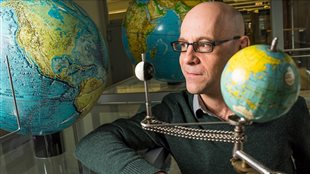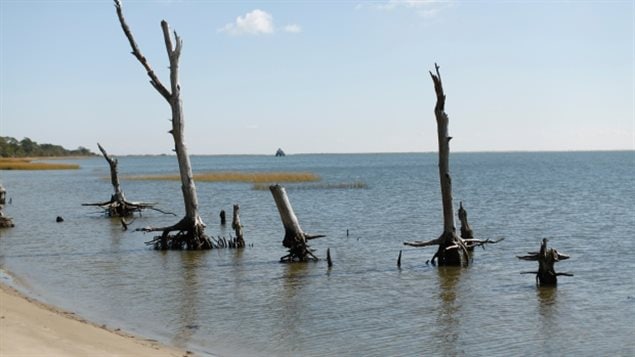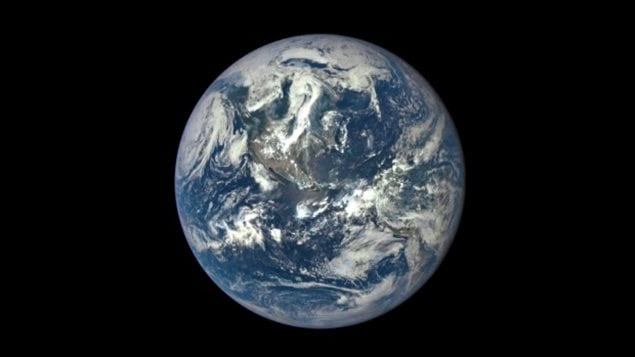It’s complicated. In fact, very complicated.
But, the ice-age, the moon, the spin-rate of the Earth’s core, global warming, melting glaciers,and sea-level rise are all factors in slowing the earth’s rotation. A team of scientists from Canada, France, and the US have developed new calculations to determine how that slowing and climate change are further related to and can predict sea level rise
Mathieu Dumberry (PhD) is an associate professor in the Department of Physics at the University of Alberta and co-author of the research paper.
Listen
The research team has resolved an enigma raised by another scientist in 2002, that the slowing of the Earth’s rotation was due in part to earth crust rebound from the ice age (transferring mass), but that sea level rise from melting glaciers, even after correction for global-warming induced sea level increase, didn’t agree with the initial theory of the rebound.
Now this team has resolved the question and published their findings in the journal Science Advances , under the title, “Reconciling past changes in Earth’s rotation with 20th century global sea-level rise: Resolving Munk’s enigma”
Scientists have known for some time that the Earth’s rotation is continually slowing, and thus the length of the day increasing. It is of course only a tiny amount, say 1.7 milliseconds per century.
They know this by analyzing eclipse data from 2,500 years ago, and from satellite data in the past couple of decades. The rate of change however has also changed in the past few decades.
The reason for the slowing was the gravitational effect of the moon, and that the Earth’s crust has been rebounding (rising) since the retreat of the glaciers, and the speed of the Earth’s core is changing.
Climate change adds to the equation.
The rate of spin is related to mass moving from the Earth’s core outward, and also from the poles toward the Equator. This is somewhat akin to a skater spinning; with their arms pulled in they spin quickly but as they extend their arms outward (moving mass away from the spin axis), they slow down.

At the same time, the rebound of the earth from the long gone ice age, increases mass closer to the Earth’s axis and theoretically should speed up rotation. The additional water going into the seas adds to the mass and also affect rotation.
In addition to a number of inputs, including glacier melt, the international team calculated the current rate of the crust rebound- the viscosity- and found the previous theories were built on an incorrect calculation. With this new calculation, they can determine the rate of rotational slowing for recent times.
This however did not jibe with figures from a thousand or so years ago before climate change and its “inputs”.
Further study calculated a different figure for the spinning of the Earth’s core, and with this new set of figures, the team were able to properly account for past slowing rates and future slowing rates, and more interestingly, how this fit with the recent rate of sea-level rise from melting glaciers.
The figures now can predict in general terms (as there are regional level differences) the future rate of sea-level rise. He says this information will be very useful for coastal cities in giving them a better idea of the rate of sea-level rise and how that will affect them in the coming decades







For reasons beyond our control, and for an undetermined period of time, our comment section is now closed. However, our social networks remain open to your contributions.